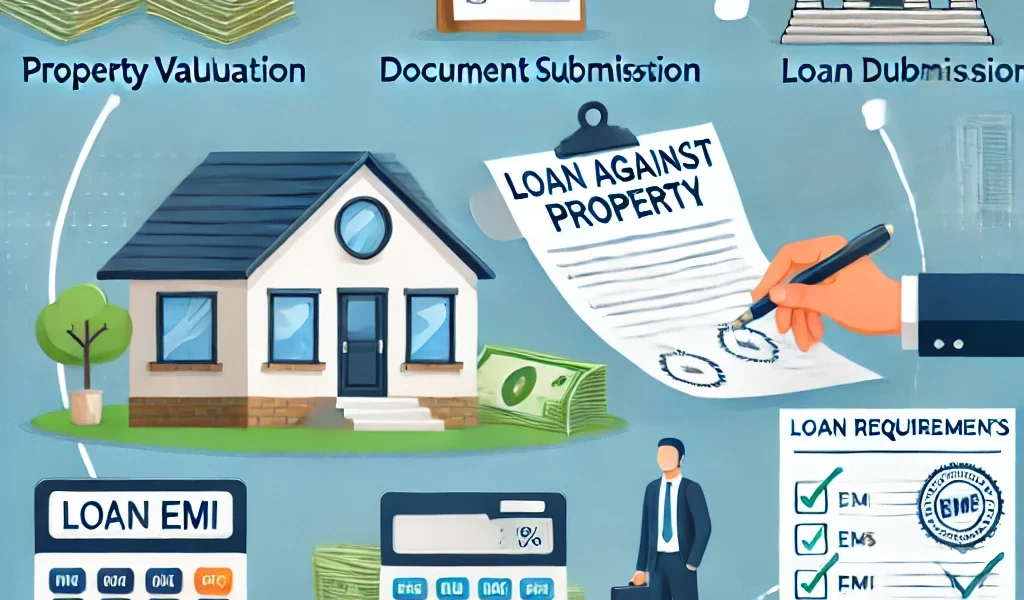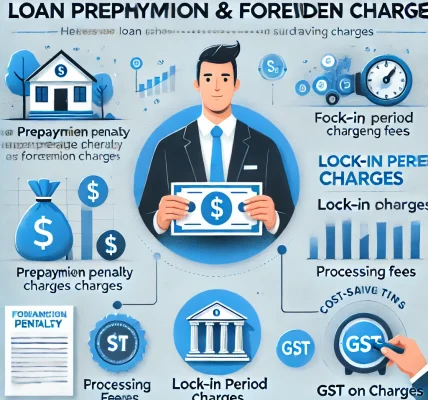Introduction
A Loan Against Property (LAP) is a secured loan where borrowers pledge their residential, commercial, or industrial property as collateral to secure funds. This type of loan can be used for various purposes such as business expansion, debt consolidation, education, or medical emergencies. Since it is backed by collateral, it typically offers lower interest rates compared to unsecured loans.
This guide will walk you through the entire process of getting a Loan Against Property, helping you make informed decisions and secure the best possible loan terms.
Step 1: Understand the Eligibility Criteria
Before applying for a Loan Against Property, check the general eligibility criteria set by lenders:
- Age: Typically between 21 to 65 years.
- Employment Type: Both salaried and self-employed individuals can apply.
- Income Stability: Lenders assess your repayment capability based on your income, employment history, and existing debts.
- Property Type: The property must be legally owned, free from disputes, and properly documented.
- Credit Score: A high credit score (700 and above) increases your chances of approval and getting lower interest rates.
Step 2: Assess Your Loan Requirements
Before you proceed with the application, determine:
- The loan amount required.
- Your repayment capacity and preferred loan tenure.
- The market value of your property, as lenders generally offer 50-70% of the property’s market value as a loan.
Step 3: Research and Compare Lenders
Different banks and financial institutions offer varying interest rates and terms for Loans Against Property. Research and compare:
- Interest rates (Fixed vs. Floating)
- Loan-to-Value (LTV) ratio
- Processing fees and other charges
- Repayment tenure (Usually up to 15-20 years)
- Prepayment and foreclosure charges
Using an online LAP comparison tool can help you find the best lender for your needs.
Step 4: Gather Required Documents
To ensure a smooth loan application process, keep the following documents ready:
- Identity Proof: Aadhar Card, PAN Card, Passport, Voter ID
- Address Proof: Utility Bill, Rental Agreement, Passport
- Income Proof:
- For Salaried Individuals: Salary slips, Form 16, Bank statements
- For Self-Employed: ITR filings, Profit & Loss statements, Business proof
- Property Documents: Ownership proof, Sales deed, Title deed, Property tax receipts
- Credit Report: Obtain your latest credit report to check your creditworthiness
Step 5: Apply for the Loan
Once you’ve selected a lender, you can apply for a Loan Against Property either online or offline:
- Online Application:
- Visit the lender’s website.
- Fill out the Loan Against Property application form.
- Upload scanned copies of required documents.
- Wait for preliminary approval.
- Offline Application:
- Visit the lender’s branch.
- Submit a filled-out physical application form along with necessary documents.
- Meet with a loan officer to discuss terms and eligibility.
Step 6: Property Valuation and Verification
Once the application is submitted, the lender will conduct a property valuation to determine the loan amount you qualify for. This involves:
- Physical inspection of the property.
- Legal verification of ownership and documentation.
- Market valuation based on location, condition, and demand.
If the property meets the lender’s criteria, the loan moves to the next stage of approval.
Step 7: Loan Approval and Agreement Signing
- Once the verification is complete, the lender approves the loan based on your eligibility and property value.
- You will receive a sanction letter detailing the loan amount, interest rate, tenure, EMI, and repayment terms.
- Carefully review the agreement and clarify any doubts before signing.
Step 8: Loan Disbursement
After signing the agreement:
- The lender disburses the loan amount directly to your bank account.
- Processing fees and other applicable charges are deducted before disbursement.
- Loan repayment starts as per the agreed EMI schedule.
Step 9: Repayment and Prepayment Options
Repay the loan through monthly EMIs (Equated Monthly Installments). To make repayment easier:
- Automate EMIs via bank mandates to avoid missed payments.
- Prepay or foreclose the loan early to reduce interest burden (Check for prepayment penalties).
- Negotiate better terms with the lender if needed.
Key Benefits of a Loan Against Property
✅ Lower interest rates compared to personal loans ✅ Higher loan amount based on property value ✅ Flexible repayment tenure (Up to 15-20 years) ✅ Continued ownership of the property while using it as collateral ✅ Funds can be used for multiple purposes (business, education, medical expenses, etc.)
Common Mistakes to Avoid
❌ Over-borrowing: Borrow only what you can comfortably repay. ❌ Ignoring loan terms: Read the fine print before signing. ❌ Not comparing lenders: Higher interest rates can lead to excessive interest costs. ❌ Skipping due diligence on property: Ensure your property is legally clear to avoid rejection. ❌ Missing EMIs: Defaulting can lead to property seizure.
Conclusion
A Loan Against Property is a great way to unlock the financial value of your real estate while still retaining ownership. By following this step-by-step guide, you can ensure a smooth and hassle-free loan application process, securing the best terms suited to your financial needs.



